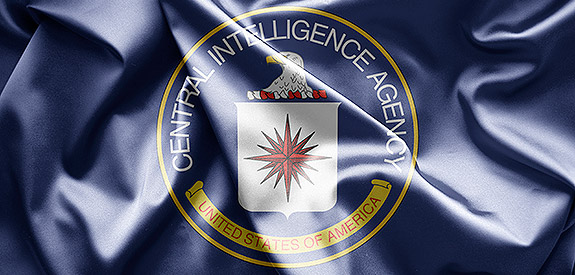October, 2017
The United States has carried out clandestine spy missions since the American Revolution. The Culper Spy Ring aided George Washington, and a network of spies operated during the Civil War. As America’s main intelligence gathering organization, the Central Intelligence Agency (CIA) traces its roots to the Office of Strategic Services (OSS). The OSS was a World War II agency formed by the Joint Chiefs of Staff to carry out covert action behind enemy lines. It was officially disbanded after the war when President Truman signed Executive Order 9621. Its functions were then split between the State and War departments.
It did not take long for Truman to recognize the ongoing need for a peacetime equivalent of the OSS. The first time that the idea of a “Central Intelligence Agency” appeared in public print was in a 1945 proposal to the U.S. Senate about restructuring the military command hierarchy. Despite opposition from the Federal Bureau of Investigation (FBI), the military and the State Department, Truman created the Central Intelligence Group (CIG) in January of the following year. He needed an organization that would combine and collate all the reports from the various intelligence agencies into a single daily briefing.
This streamlined report would provide an overview of important issues happening around the world and overcome the seeming lack of coordination among the different services. In his memoirs, Truman wrote that he believed it was important for the country to have a sound, well-organized intelligence apparatus. This enabled the president to know what was going on around the world and have the necessary facts to make informed decisions if action was required. The CIG would provide information, strategic warnings and oversee clandestine operations overseas. The drawback was that the CIG relied on funding and support from the other agencies, which could withdraw it at anytime. The solution was the creation of an organization with its own legal and financial framework, separate and independent from the other agencies. The CIG would remain operational until the passage of the National Security Act of 1947.
“The CIA was seen as a counterweight to the KGB, a secret Soviet Union security organization, which had been operating for many years.”
A major restructuring of the country’s military and intelligence gathering agencies, the Act created the Department of Defense and the CIA as an independent organization. While Truman may have envisioned the CIA as a daily newspaper providing information on developments around the globe that could affect American foreign policy, the agency quickly evolved into an organization that also conducted covert operations similar to its OSS predecessor. These missions were mainly directed against the Soviet Union as part of the country’s ongoing efforts to fight the Cold War. The CIA was seen as a counterweight to the KGB, a secret Soviet Union security organization, which had been operating for many years. While the FBI handled domestic intelligence and security, the CIA would function in a similar fashion overseas. The Central Intelligence Agency Act of 1949 further outlined the missions and responsibilities of the organization that were not clearly defined in the 1947 legislation.
Americans who once feared the establishment of an organization like the CIA embraced it as a tool for winning the Cold War. Later in life, Truman, like many others, commented that civilian leaders needed to remain vigilant in their oversight of the CIA.
